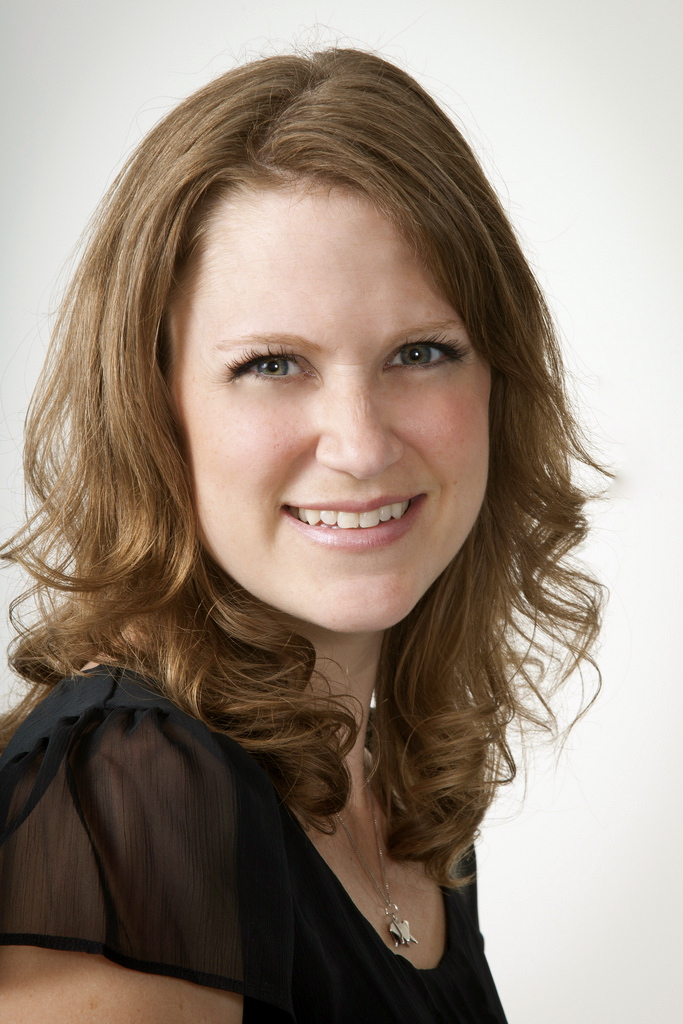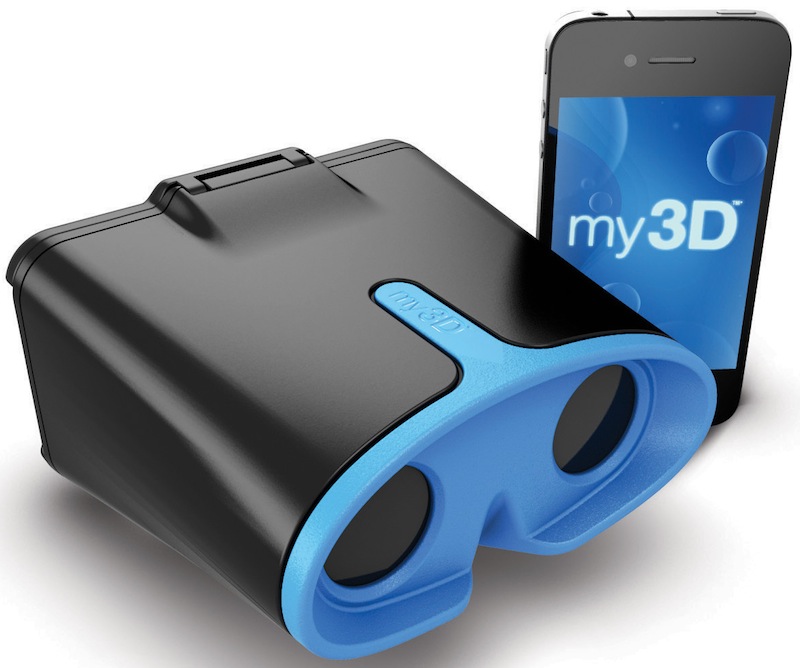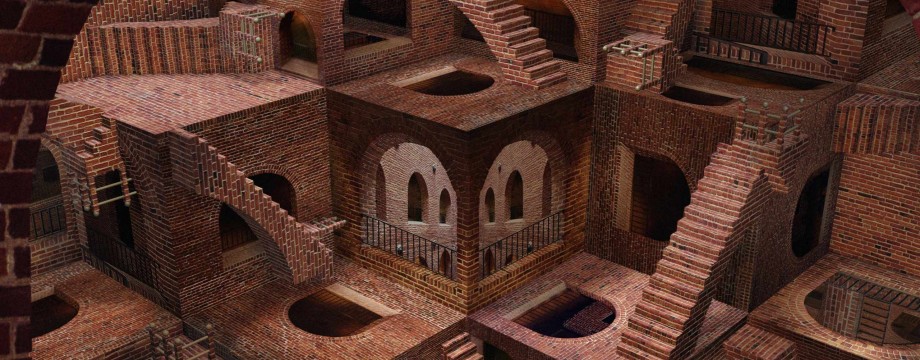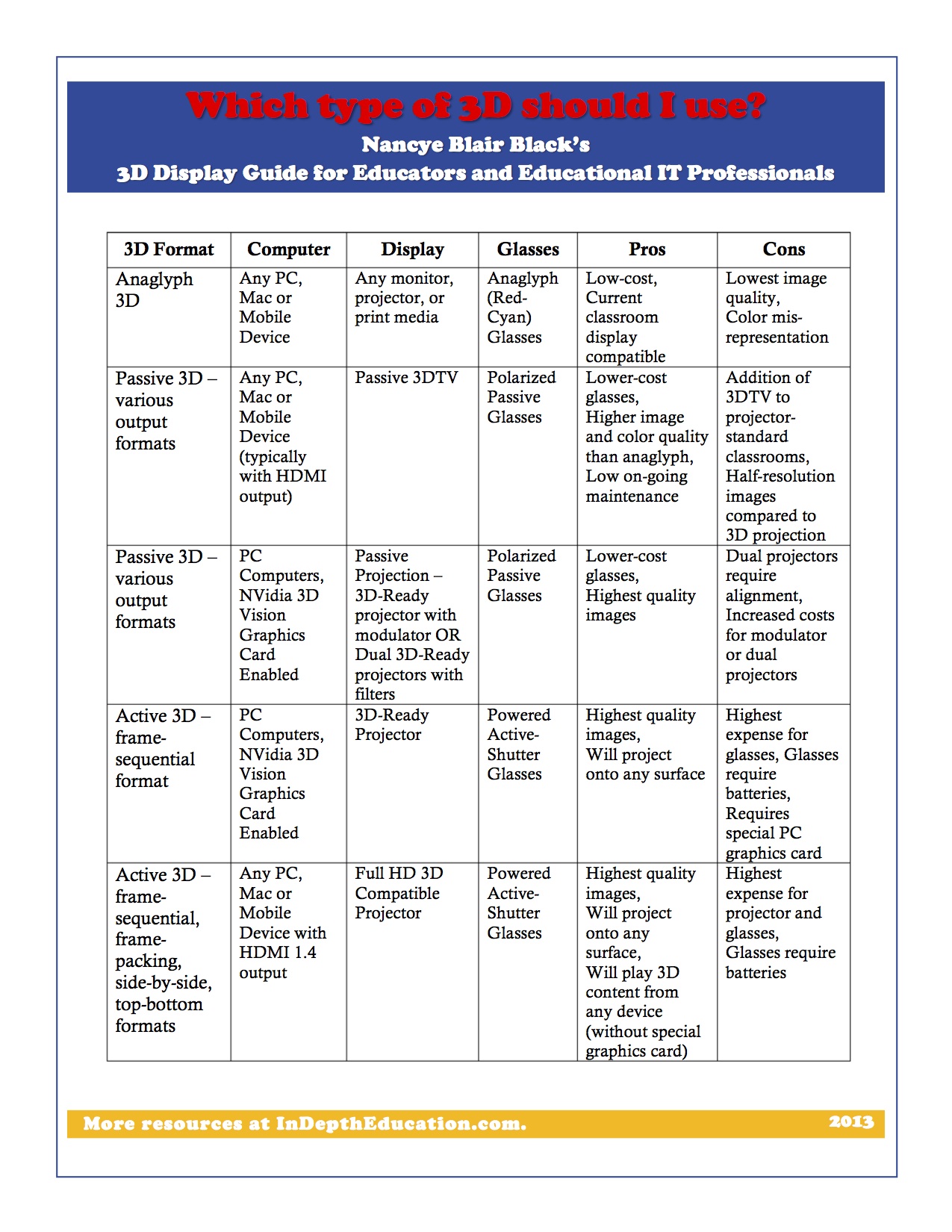While this is a complex topic that I will continue to address in the future, a simple list of options with pros and cons is a great start to the conversation. Here goes!
4 Reasons 3D is Vital to ISTE 2014, plus SIG3D’s Webinar Video
With ISTE 2013 only just behind us, it’s already time to start thinking about submitting proposals for next year’s conference. The ISTE 2014 Conference will take place in Atlanta, GA from June 28 to July 1, but the call for participation ends in just a week on October 2nd.
As you consider your submitting for next year’s conference, it has never been more important to consider including 3D technologies. Why?
1. The International Society of Technology in Education is an organization that represents the interests and priorities of educational technology leaders. Each year, the conference program and exhibit hall reveal the both newest and more effective technologies and edtech practices to nearly 20,000 attendees. In recent years, 3D technologies in design/modeling, 3D printing and stereoscopic 3D have represented the true cutting edge in educational technologies. Including sessions, demonstrations, and hands-on offerings that allow educators to explore these technologies maintains the ISTE Conference’s reputation as the quintessential home for edtech innovation.
2. 3D technologies and applications are internationally relevant to educational best practices. Stories, research and case studies of successes in teaching with 3D have emerged from countries across 6 continents, with applications spreading widely across the United States, India, and Europe. With attendees participating from around the world, the ISTE Conference is the perfect venue for exploring and sharing emerging practices relevant to the global learning community.
3. Knowledge and skills in emerging technologies lead to success in emerging careers. With 3D applications exploding in design, technology, engineering and manufacturing industries, exposing our students to learning and creating in three dimensions prepares them for future success in college, careers and life.
4. Teaching and learning with 3D technologies leads to significant learning benefits. Research from case studies around the world are demonstrating that teaching with 3D technologies is good for students. For example, when teaching with stereoscopic 3D video, interactives, and simulations, students demonstrate significant increases in learning gains, retention, abstract concept mastery, and more. A great overview of these benefits can be found in my Stereoscopic 3D Enhances Learning infographic.
To get a better idea of the ISTE proposal process, ways that 3D relates to edtech’s hottest topics, and how to identify your own area of expertise to share, watch our SIG3D September 2013 Webinar archive video: How to Write a Great Proposal for ISTE 2014… and Why SIG3D Members Should!
And if and when you do submit your 3D technology-related proposal for ISTE 2014, I would love to hear about it. Please, feel free to share about your ideas and approach in the comments below. I look forward to connecting with you now and at the ISTE 2014 conference!
This week: 2 ISTE & STEMxCon Webinars on 3D in Education
As it happens, when you let the webinars fall where they may, sometimes you end up with a unique week like this one! This week, I will be presenting two free opportunities to explore the use of 3D in education.
Here’s the scoop:
ISTE SIG3D Webinar:
How to Write a Great Proposal for ISTE 2014…
and Why SIG3D Members Should!
Tuesday, September 17 @ 8 PM ET/ 7 PM CT/ 6 PM MT/ 5 PM PT
Register for the free webinar here.
Do you have a great 3D idea, lesson, concept, research study or practice that other educators would benefit from? If so, you should consider submitting a proposal to present at ISTE 2014. With growing interest in 3D Design, 3D Printing, and Stereoscopic 3D from ISTE members and the educational community, it has never been more important to represent these emerging and innovative fields at the annual conference! Join us to learn tips for submitting, hear from experienced ISTE presenters, and even connect with other 3D educators to help form potential sessions, posters, forums and more!
STEMx Virtual Conference Session:
In Depth Education: Using 3D Technologies to Enhance STEMx
Saturday, September 21 @ 1 PM ET/ 12 PM CT/ 11 AM MT/ 10 AM PT
Sign up for the free conference here.
Link to the session: https://sas.ell
Teaching and learning with 3D technologies have proven to improve student achievement, attention, behavior, and more! Learn how three types of 3D educational applications can enhance your STEM learning at all grade levels!
– Stereoscopic 3D (s3D): Stereoscopic 3D is the most classic use of the term 3D. Most people are familiar with this type of 3D from experiencing it in 3D cinemas and theme park rides, which date back to the early 1900s. Whether with glasses or new glasses-free displays, s3D videos and simulations are increasing students learning gains in classrooms around the world.
– 3D Design (Rendering): As the use of digital tools allowed for the design and rendering of animated objects, the term 3D was expanded to include the rendering of 3-dimensional objects for two-dimensional display viewing. Progressive uses in education may include augmented reality, virtual environments, simulations, video-game creation, and design work using programs like Google Sketch-Up and Autodesk Maya.
– 3D Printing: 3D printing (also known as additive manufacturing) allows for the physical production of digitally designed three-dimension
While each of these provides powerful opportunities for learning, together they comprise an essential triumvirate for developing the skills and knowledge needed for success in the emerging fields and careers of the twenty-first century. In this session, we will explore the basics of these 3D technologies, research-based benefits to integration, and how to get started integrating 3D into your STEMx education!

Nancye Blair Black is an award-winning educator, author and educational consultant. She currently serves as the Chair of ISTE’s Special Interest Group for 3D in Education (iste.org/sig3d) and recently published a chapter on 3D document camera use in the IGI Global book, Cases on 3D Technology Application and Integration in Education. Her other blogs and resources regarding 3D can be found at NancyeBlack.com.
Infographic: Stereoscopic 3D Enhances Learning
Stereoscopic 3D Enhances Learning | In Depth Education Infographic
by Nancye Blair Black

Nancye Blair Black is an award-winning educator, impactful educational consultant, author and speaker. She is the Founder and Chair of ISTE’s Special Interest Group for 3D in Education (SIG3D).
SIG3D Launches New 3D in Education Webinar Series
Out of ISTE’s new Special Interest Group comes a powerful opportunity for learning and collaborating with 3D in Education. SIG3D is sponsoring a series of webinars on the 3rd Tuesday of each month at 8 PM EST, along with additional opportunities for follow-up Q & As with their leadership team.
 Below is a list of the webinars currently on the schedule. As we are planning for the coming year, what topics would you like to learn more about? What 3D experts or organizations would you like to hear more from?
Below is a list of the webinars currently on the schedule. As we are planning for the coming year, what topics would you like to learn more about? What 3D experts or organizations would you like to hear more from?
Tuesday, August 20, 2013, 8 PM EST
Stereoscopic 3D Classroom Basics
Register to attend
Link to Webinar Room
Are you interested in understanding how stereoscopic 3D works, what is required to use it in the classroom, and even how you and your students can start creating stereoscopic 3D? In this webinar, 3D expert and SIG3D leadership team member Dennis Cafiero will show you the basics of using Stereoscopic 3D. You will discover how stereoscopic 3D works, as well as how to find and create 3D content for your classroom using free tools and online resources. Plus, you’ll learn about various 3D display technologies available for your classroom… and the pros and cons for each system. With robust resources and great integration ideas, you will leave ready to start trying out 3D in your classroom right away!
Presenter Bio: When founding Presente3D in 2011, Dennis Cafiero discovered that many people were disenchanted with 3D because of the high cost of development and overall lack of knowledge regarding 3D. “It just wasn’t simple to create 3D content unless you were a trained 3D professional.” Since then, Dennis has worked hard to prove that 3D technologies can flourish within every classroom and within every budget. As former Technical Director for Eon Reality, Dennis shares wisdom and insight from over 16 years of experience in virtual reality, stereoscopic 3D software development, and educational 3D applications.
Stereoscopic 3D Classroom Basics: Follow-up Q & A, with Dennis Cafiero
**Google Hangout** **Link**
**Register here**
Stereoscopic 3D Comes to ISTE 2013
 ISTE Attendees, this list is for those of you interested in what is truly the most cutting edge in educational technology. Several ISTE 2013 sessions, events and resources can plug you in to the most current and emerging tools and practices for employing stereoscopic 3D in teaching and learning. Here they are:
ISTE Attendees, this list is for those of you interested in what is truly the most cutting edge in educational technology. Several ISTE 2013 sessions, events and resources can plug you in to the most current and emerging tools and practices for employing stereoscopic 3D in teaching and learning. Here they are:
Sunday, June 23 – SIG3D Open House
at the ISTE Member Networking Fair
3:00 – 5:00 PM
SACC Tower View Lobby
Meet the Leadership Team, network with other members, and get your SIG3D badge ribbon!
Monday, June 24 – Poster Session, Nancye Black
In Depth Education: Diving into Stereoscopic 3D Learning and Creating
11:00 AM – 1:00 PM
SACC Tower View Lobby, Table 7
Increase visual teaching, critical thinking, understanding, and engagement with anaglyph and stereoscopic 3D applications. Discover how student-created media, dynamic resources, and 3D tools deliver larger-than-life digital learning!
Tuesday, June 25 – SIG3D Inaugural Gathering
5:00 – 6:15 PM
SACC Social Butterfly and Newbie Lounge, West Reg
Find out what SIG3D is all about, network with other members, engage 3D learning stations, breakout for beginners and advanced users, contribute to the future of SIG3D. Plus, win 3D prizes like Presente3D, Eon Creator, 3D Ladibug Doc Cam, and Kid Pix 3D!
SIG3D’s List of Stereoscopic 3D Vendors: Click here.
This list will be updated regularly throughout the conference.
Other non-stereoscopic, yet related, sessions of possible interest:
Using 3D Printers in Education, Mark Barnett
Poster Session: Wednesday, 6/26/2013; 11:00am–1:00pm; SACC Tower View Lobby: Table 18
Teach 3D Game Design in One Week, Alexander Repenning
Workshop: Saturday, 6/22/2013, 8:30am–11:30am, SACC 208
Oh the Places You Will Go: Google Earth, SketchUp, Robert Craven
Workshop: Wednesday, 6/26/2013, 8:30am–11:30am, SACC 207A
Megan Power’s Top Tips for Student 3D Movie Making
As I shared earlier this month, Megan Power took her kindergarten students all the way to the top through the creation of a 3D movie called “Flashback in Time.” In addition to the great information she shared about teaching and learning with stereoscopic 3D, Megan also has some important tips to share about making 3D movies with our students.
 Megan Power’s Top Tips for Student 3D Movie Making
Megan Power’s Top Tips for Student 3D Movie Making
*Megan Power and her students created their class’ movie using a Sony 3D camcorder. While she and her students showed the film in anaglyph 3D, it could have also been viewed in full-color stereoscopic 3D through the use of a 3D monitor, 3D projector or 3D TV.
5 Stereoscopic 3D Resources for Elementary Students
Looking for a way to test the waters of stereoscopic 3D teaching and learning with your elementary students? Here are a few ways to start integrating the benefits of 3D learning right away:
– 3D Ladibug Document Camera: This dynamic document camera is able to perform all of the basic tasks of a traditional document camera. Plus, it can show objects and manipulatives in anaglyph (red/cyan) and stereoscopic 3D (passive or active) by using the 3D software. In the 3D Ladibug pilot, elementary students were more engaged in lessons and more interested in creating models to use when presenting to the class, creating a more hands-on and collaborative learning environment.
 – Presente3D: Most elementary students begin learning to use Microsoft PowerPoint at an early age. When I was a K-5 Technology Specialist, we started using PowerPoint successfully with our first graders. Presente 3D is an add-on to Microsoft PowerPoint, allowing the students to turn their presentations into anaglyph or stereoscopic 3D! By giving students the power to create and present in this intriguing platform, we can increase attention and motivation with our students. Their website offers a free download of Presente3D in demo mode – a great to try out its potential!
– Presente3D: Most elementary students begin learning to use Microsoft PowerPoint at an early age. When I was a K-5 Technology Specialist, we started using PowerPoint successfully with our first graders. Presente 3D is an add-on to Microsoft PowerPoint, allowing the students to turn their presentations into anaglyph or stereoscopic 3D! By giving students the power to create and present in this intriguing platform, we can increase attention and motivation with our students. Their website offers a free download of Presente3D in demo mode – a great to try out its potential!
– Kid Pix 3D: While Kid Pix has been a staple for student digital artwork for several years, the new version of Kid Pix allow students to create both images and videos in anaglyph 3D. There is even a way for students to record their faces inside of digital costumes, putting themselves right into the 3D action. Kid Pix 3D offers a 15 day free trial of their software here.
 – Hasbro My3D: This nifty gadget turns your iPod Touch or iPhone into a 21st Century View Master. By downloading compatible stereoscopic 3D single-player games and interactives, students can have the sensation of immersive experiences like traveling through the Solar System or swimming with sharks.
– Hasbro My3D: This nifty gadget turns your iPod Touch or iPhone into a 21st Century View Master. By downloading compatible stereoscopic 3D single-player games and interactives, students can have the sensation of immersive experiences like traveling through the Solar System or swimming with sharks.
– 3D Books: Books with anaglyph images are popping up everywhere… and students are captivated by both the pictures and the content. Topics range from space to geography to animals. Look for them at your local bookstore or even the school bookfair. A couple of my students’ favorites are Eye-Popping 3D Pets and Extreme 3-D: Dangerous Animals.
There are so many ways to get started with stereoscopic 3D in the elementary classroom. In addition to these 5 easy-to-get-started resources, there are also great stereoscopic 3D video clips, simulations and interactives available. Look for future posts with more information and recommendations!

Nancye Blair Black is an award-winning educator and impactful educational consultant and speaker. She is the Founder and Chair of ISTE’s Special Interest Group for 3D in Education (SIG3D).
InDepthEducation.com’s 3D Educator of the Month: Megan Power
 3D Movie-Making? In Kindergarten? Although this might sound crazy to some, to Megan Power this is just a small example of what her students are capable of! In her eleventh year of teaching in Poway Unified School District in San Diego, California, she has been an innovative technology integrator. This is her sixth year making movies with her students, but last year marked their first year working in 3D… and it was a great success! Their film “Flashback in Time” won two San Diego County Office of Education Innovative Video in Education (SDCOE iVIE) awards in the K-2 and People’s Choice divisions.
3D Movie-Making? In Kindergarten? Although this might sound crazy to some, to Megan Power this is just a small example of what her students are capable of! In her eleventh year of teaching in Poway Unified School District in San Diego, California, she has been an innovative technology integrator. This is her sixth year making movies with her students, but last year marked their first year working in 3D… and it was a great success! Their film “Flashback in Time” won two San Diego County Office of Education Innovative Video in Education (SDCOE iVIE) awards in the K-2 and People’s Choice divisions.
So, what does Megan have to say about teaching and learning in stereoscopic 3D? Let’s find out!
Q: How long have you been working with 3D technologies and in what capacity?
Megan: I have been using stereoscopic 3D in my classroom for 1 year.
Q: What made you decide to integrate 3D teaching and learning into your classroom?
Megan: My kindergarten class was writing and filming a movie about decades in history last year and we wanted our audience to feel like they were really in the past. Our original idea was to film in 3D so the movie would be more realistic and allow viewers to experience the past with “future” technology. When researching the 20s, 50s, and 80s we found that 3D was around at those time periods. This finding became a very important piece that was threaded in our movie. 3D also gave the students a chance to learn about our sense of sight and about different perspectives.
Q: In what ways have you found 3D technologies innovative, unique and/or helpful in education?
Megan: 3D is exciting and engaging. Because it is so close to real life students remember concepts and content more. It brings a whole new depth to learning and video.
Q: What are your thoughts on student use (K-12 or college) of 3D technologies?
Megan: Any type of filming project with students is powerful. When you give students another dimension to work in, the project gets that much better. Students really have to think about the content and about the process of filming on a deeper level when creating in 3D. I would like to experiment more with 3D content in the classroom and am excited to see more students’ 3D projects.
Q: How can readers find out more about your work?
Megan: People can find out more by watching our movie on YouTube.
———
Are you making a difference in teaching and learning with stereoscopic 3D technologies? Do you know someone who is? Nominate them for InDepthEducation’s 3D Educator of the Month!
Call for SIG3D Presenters: Show Off Your 3D Prowess at ISTE 2013




Recent Comments